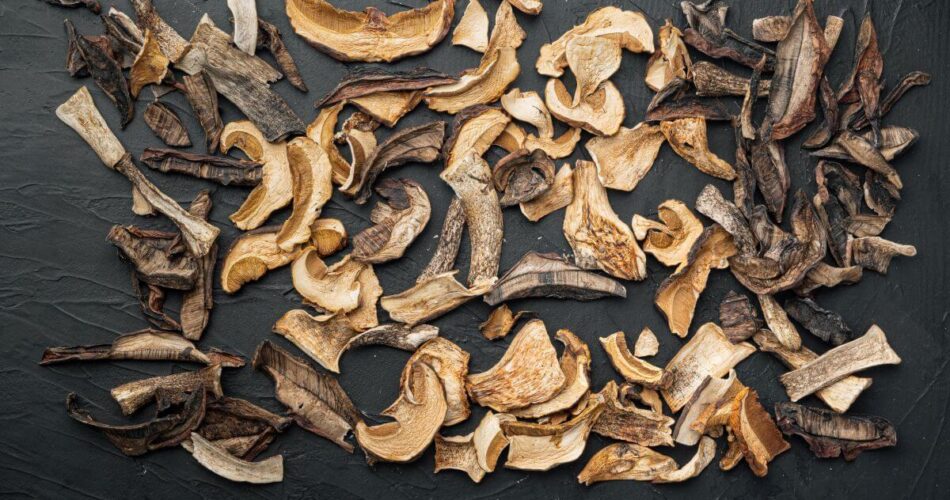Have you ever gone mushroom hunting and come home with a hideous orange mushroom you couldn’t identify? If so, you may have found a Gymnopilus luteus. Let’s find out more about this species.
If you’re into hiking or camping, there’s a good chance you’ll come across some Gymnopilus luteus mushrooms. They’re pretty common in North America. This post will teach you all about the G. Luteus mushroom, including how to identify it and where to find it.
Gymnopilus Luteus – Habitat
Gymnopilus luteus is a species of mushroom in the family Cortinariaceae. It was first described by German mycologist Paul Kummer in 1871 as Galerina lutea, and later transferred to the genus Gymnopilus by American mycologist Rolf Singer in 1948.
Gymnopilus luteus is a mushroom that can be found growing on rotting logs or stumps in woods. It prefers to grow in deciduous forests, but can also be found in mixed woods. In North America, it is most commonly found in the eastern United States and Canada. This mushroom can also be found in Europe and Asia. Gymnopilus luteus typically fruits in late summer to early fall, and it is a widely distributed mushroom. They usually form clusters on dead or dying hardwoods, stumps or fallen logs.
Gymnopilus Luteus – Morphology
The fruit bodies of this fungus are small and yellow, with a convex to flattened cap that measures up to 2 cm (0.8 in) in diameter. The gills are free from attachment to the stipe, and begin spotting brownish as the spores mature. The stipe measures between 3 and 5 cm (1.2 and 2.0 in) long by 0.3–0.5 cm (0.12–0.20 in) wide, and is equal in width throughout or slightly swollen at the base. It is pale yellow to rusty or brownish near the top, and paler towards the bottom.
The flesh of the mushroom is thin and brittle, with no distinctive smell and bitter taste. The other name for Gymnopilus luteus is Yellow Gymnopilus.
Is Gymnopilus Luteus a Magic Mushroom?
Gymnopilus luteus, also known as the yellow-staining mushroom, is a member of the Gymnopilus genus of fungi. This type of mushroom is typically found in tropical and subtropical regions around the world.
This species contain the psychoactive compounds psilocybin and psilocin, which can produce hallucinations and altered states of consciousness. Consequently, G. luteus has been used in traditional shamanic rituals for centuries.
In recent years, there has been an increase in the popularity of G. luteus as a hallucinogen. This is due to the fact that it is relatively easy to cultivate, and it is not currently scheduled as a controlled substance.
However, there is still much we do not know about this hallucinogenic mushroom. For example, it is unclear what the long-term effects of consuming G. luteus are. Therefore, it is important to approach its use with caution.
How to Identify Gymnopilus Luteus
Look for a yellow or orange cap, although the color can vary somewhat depending on the age of the mushroom.
Another key identifying feature of this mushroom is a ring around the stem. This ring is actually the remnants of the mushroom’s veil, which breaks as the mushroom matures. Gymnopilus luteus has orange or light yellow gills that are attached to the stem.
Look for a spore print that is rusty brown in color. To get a spore print, you will need to cut the mushroom in half and place it gills-down on a piece of white paper. Wait a few hours, then check the paper for brown or orange spores.
If you’re not sure whether or not a mushroom is Gymnopilus luteus, it’s always best to err on the side of caution and assume that it is not.
Gymnopilus luteus can be often mistaken for Gymnopilus junonius (other names: Big Laughing Gym, Spectacular Rustgill, Gymnopilus spectabilis).
Similar Posts:
- Gymnopilus Luteofolius – Spore Print, Description, Habitat, etc. Learn About This Unique Fungus
- Gymnopilus Aeruginosus – Species Information, Habitat & Morphology
- Gymnopilus Validipes: All You Should Know About Magic Mushroom Species
- Gymnopilus Luteoviridis Mushrooms: A Complete Guide
- Gymnopilus Purpuratus. All You Need to Know About This Magic Mushroom Species
- Gymnopilus Viridans: Uncommon Shrooms Species
- Pluteus Brunneidiscus: Mushroom Description & Habitat. Does Pluteus Brunneidiscus Contain Psilocybin?





